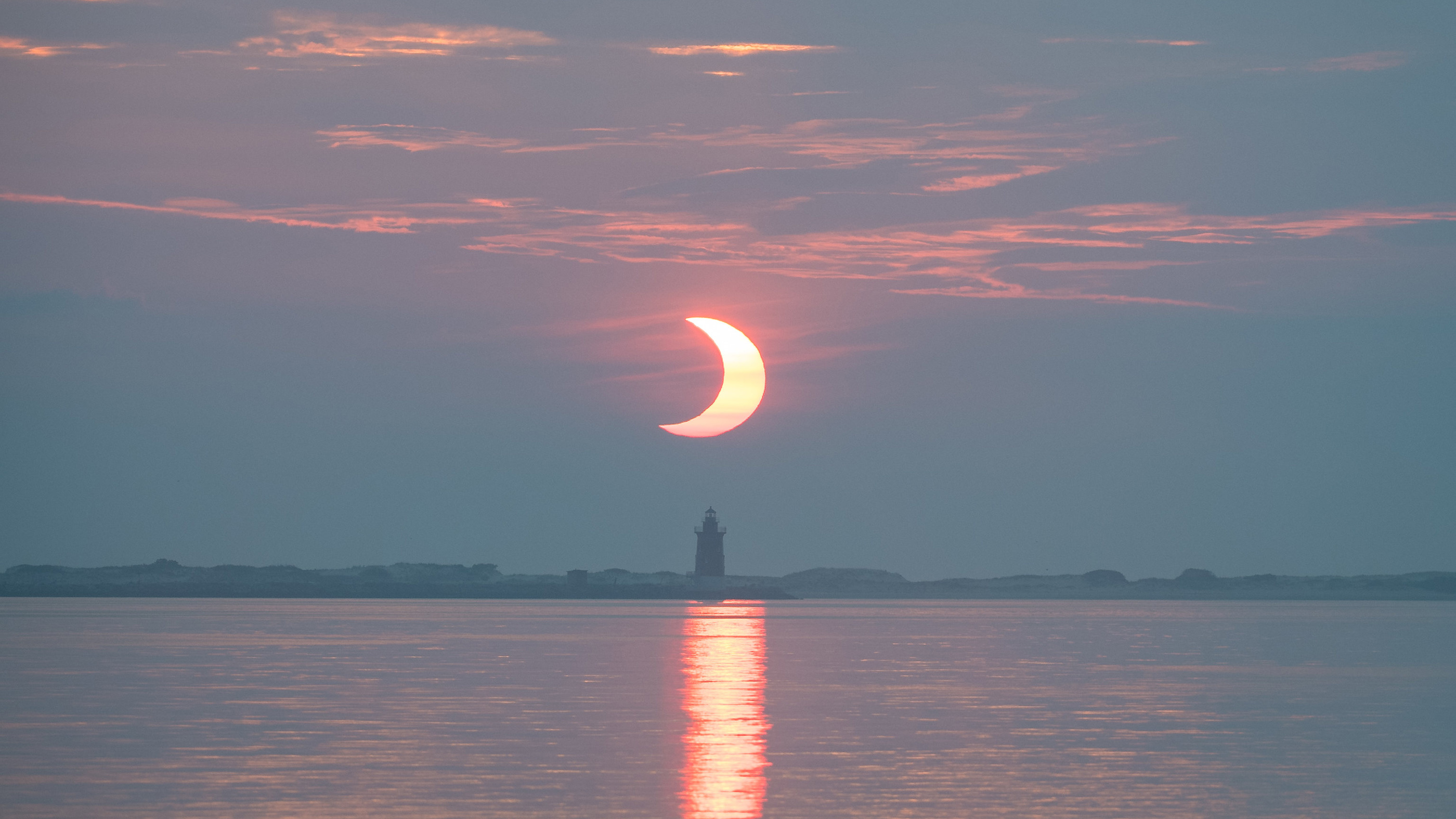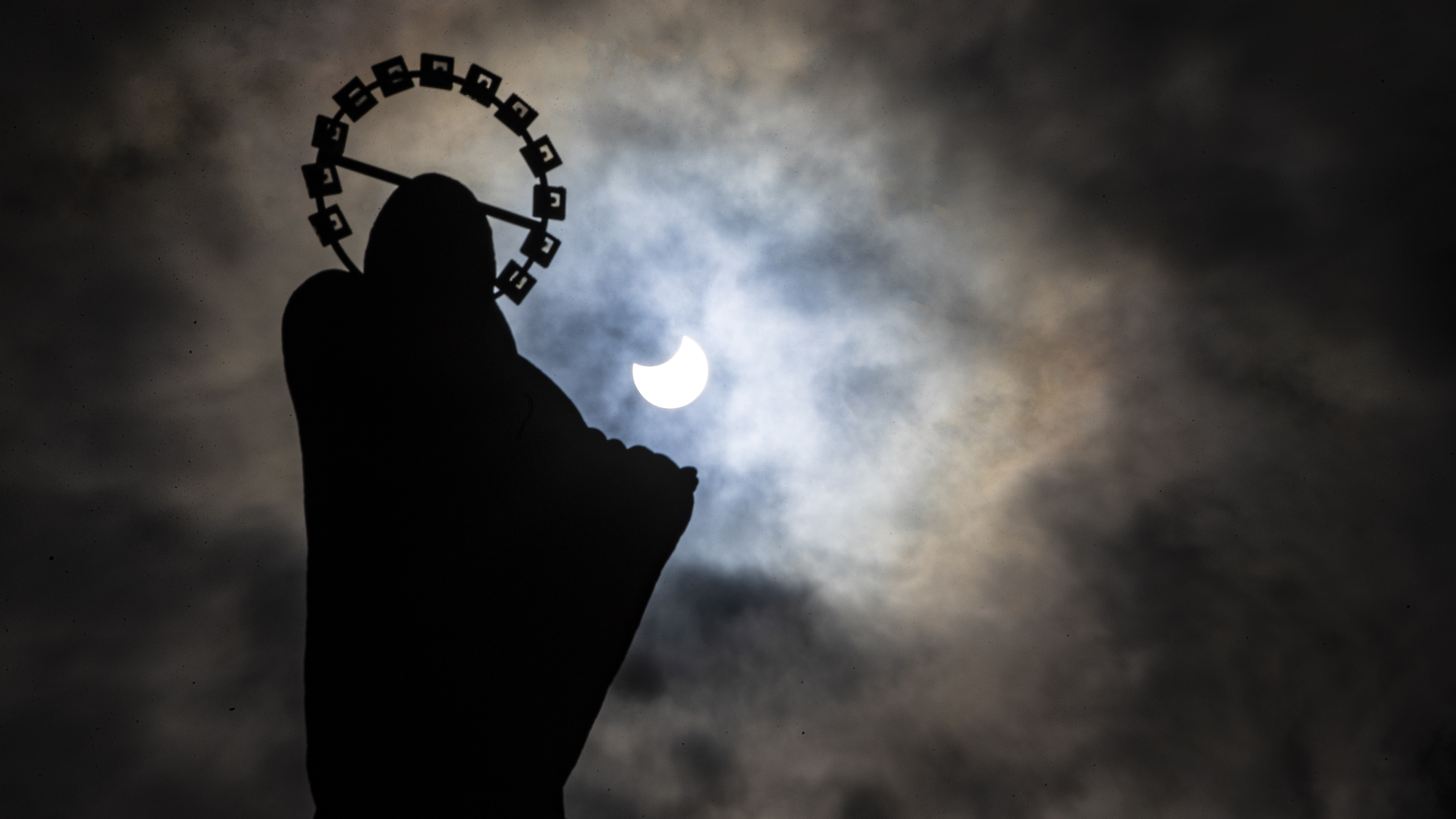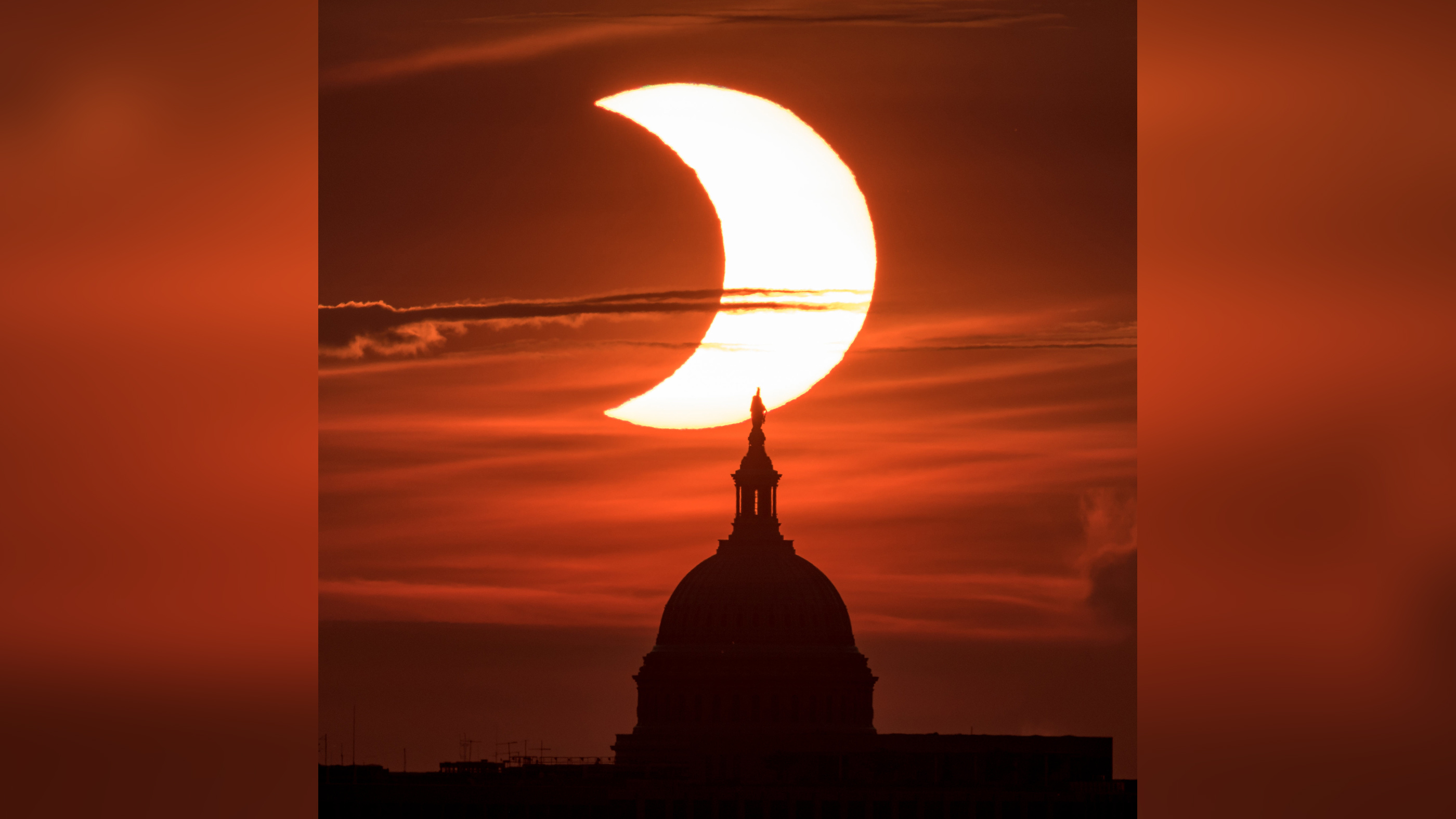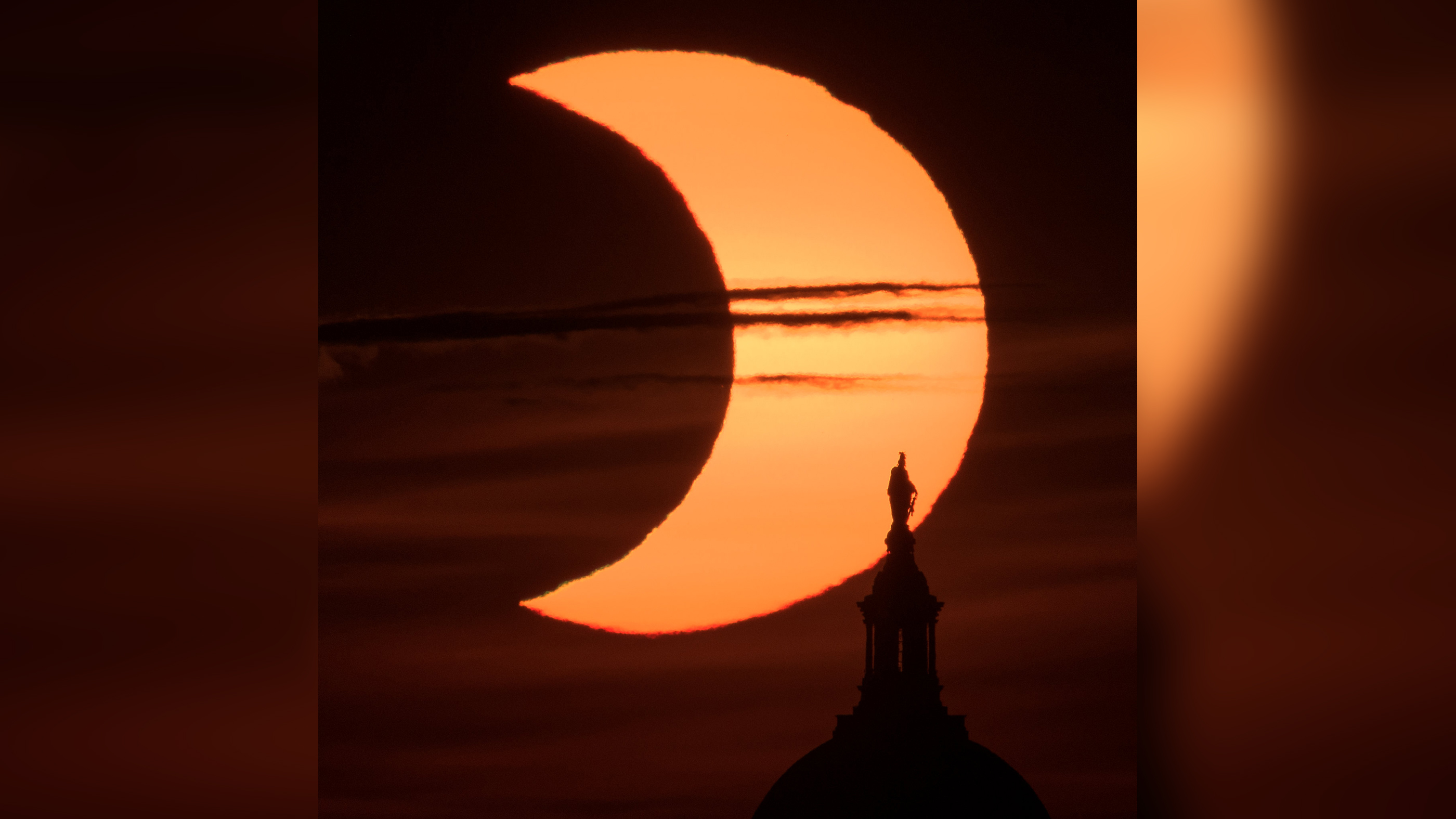'Ring of fire' solar eclipse wows skywatchers (Photos)
The first solar eclipse of the year did not disappoint.
Early Thursday morning, the moon almost entirely blocked the sun, leaving only a "ring of fire" visible. Though skygazers in only a few places (parts of Canada, Greenland and northern Russia) were treated to this annular eclipse (the fiery ring effect), plenty of other spots were located along the path of the partial solar eclipse.
People in parts of the eastern United States and northern Alaska, much of Canada, and parts of the Caribbean, Europe, Asia and northern Africa, were in prime spots to catch the moon take a big bite out of the sun during the partial solar eclipse (weather permitting). Here's a look at some of the stunning views captured by eclipse watchers.

New York was treated to a partial solar eclipse this morning, as seen in this eerie image captured on June 10, 2021.
The partial solar eclipse hangs behind a statue of Our Lady, Star Of The Sea on Bull Wall in Dublin, on June 10, 2021. Skywatchers in the U.K. and Ireland saw a crescent sun instead of the “ring of fire” formed by the annular eclipse.
Bill Ingalls, senior contract photographer for NASA Headquarters, was set up in Arlington, Virginia, where he had fantastic views of Washington, D.C. Here, the moon has taken a bite out of the sun.
From Arlington, Ingalls had a terrific view of the U.S. Capitol Building, seen here as the sun rises behind it.
Get the world’s most fascinating discoveries delivered straight to your inbox.
During an annular or partial solar eclipse, no part of the phenomenon is safe to watch without proper solar eclipse glasses or other appropriate filters. Looking directly at the sun can damage your eyes.

Ingalls captured another gorgeous shot of the partial solar eclipse just as the sun rose behind the U.S. Capitol Building, Thursday, June 10, 2021, as seen from Arlington, Virginia.
During the partial solar eclipse, Ingalls watched as part of the moon's outer, lighter shadow (called the penumbra) inched across the sun. As the moon passed in front of the sun, that shadow appeared to take a giant bite out of Earth's star. For viewers in the U.S., prime-watching occurred before, during and shortly after sunrise. Here, Ingalls snapped another shot of the partial eclipse from Arlington, Virginia, just behind the Statue of Freedom atop the U.S. Capitol Building.
NASA photographer Aubrey Gemignani was stationed in Delaware, where she caught glimpses of the partial solar eclipse as the sun was rising behind the Delaware Breakwater Lighthouse, at Lewes Beach.
The sun rises next to the Statue of Liberty during the partial solar eclipse on June 10, 2021, in New York City. Part of the U.S. saw the partially eclipsed sunrise, while other parts of the Northern Hemisphere were treated to the "ring of fire" effect from the annular solar eclipse. Here, Lady Liberty's crown is lit up from the sun's rays.

Gemignani captures another gorgeous image of the partial solar eclipse as the sun rises in Lewes, Delaware.

The Inuit village of Qaanaaq in northern Greenland saw a remarkable view of the annular eclipse on June 10, 2021. Qaanaaq, located halfway between the Arctic circle and the North Pole, has a population of 650 people.
One resident, Panigpak Daorana, said he was looking forward to experiencing the solar eclipse so he could compare it with one he saw as a young boy. "That time it got much darker as the moon was bigger, closer to Earth," Daorana said in a statement. "Now it only got a little darker and the sky bluer. And I could notice how it got a bit colder."
Daorana's daughter, Halumi Daorana, snapped this image of the ring of fire.
Originally published on Live Science.
Jeanna Bryner is managing editor of Scientific American. Previously she was editor in chief of Live Science and, prior to that, an editor at Scholastic's Science World magazine. Bryner has an English degree from Salisbury University, a master's degree in biogeochemistry and environmental sciences from the University of Maryland and a graduate science journalism degree from New York University. She has worked as a biologist in Florida, where she monitored wetlands and did field surveys for endangered species, including the gorgeous Florida Scrub Jay. She also received an ocean sciences journalism fellowship from the Woods Hole Oceanographic Institution. She is a firm believer that science is for everyone and that just about everything can be viewed through the lens of science.








